CAR T-Cell Therapy: Impact, Personalization, and Side Effects Explained by Dr Saadvik Raghuram – Best Oncologist in Hyderabad
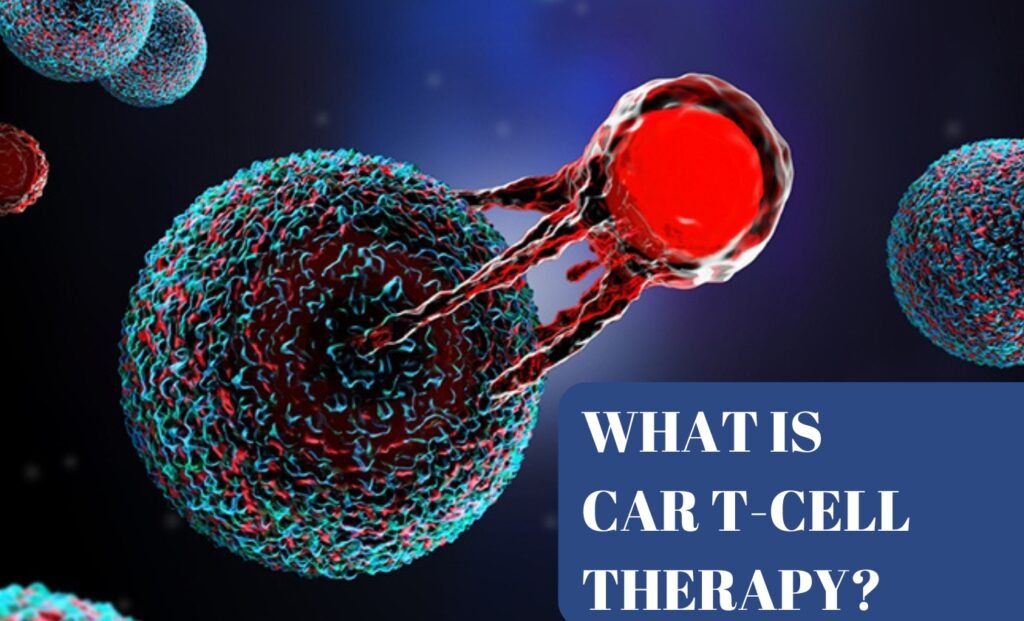
Certainly! Let’s delve into the fascinating world of CAR T-cell therapy, a cutting-edge approach in the fight against cancer. Understanding the Basics Our immune system is like a vigilant security force, constantly patrolling our body to identify and neutralize any threats. One of its key players is the T cell, a type of white blood cell. These T cells have special receptors that allow them to recognize foreign invaders, such as viruses or bacteria. Think of these receptors as the “keys” that fit specific “locks” on the surface of these invaders. Now, imagine if we could reprogram these T cells to specifically target cancer cells. That’s where CAR T-cell therapy comes into play. What Is CAR T-Cell Therapy? Chimeric Antigen Receptor (CAR): The name might sound complex, but let’s break it down. “Chimeric” means a combination of different parts. In this case, we’re combining a receptor (the “lock-and-key” system) with an antigen (a specific protein found on cancer cells). This hybrid receptor is the CAR. Lab Transformation: Here’s the magic: We collect T cells from the patient’s blood. In the lab, we genetically engineer these T cells by adding the CAR gene. Essentially, we equip them with a new set of keys that fit perfectly into the cancer cell locks. Targeting Cancer: Once modified, these CAR T cells are infused back into the patient. They now patrol the body, seeking out cancer cells. When they encounter a cancer cell with the matching antigen (like a wanted criminal), they latch on and unleash their attack. It’s like turning our immune system into a precision-guided missile system! Personalized Medicine Custom-Made CARs: Each CAR is tailor-made for a specific cancer type. For instance, if a patient has leukemia or lymphoma, we create CAR T cells that recognize an antigen called CD19 found on those cancer cells. These CAR T cells won’t work against other cancers lacking CD19. Process: The journey from collecting T cells to infusing CAR T cells takes several weeks. During leukapheresis, we separate T cells from the patient’s blood. It’s like assembling an elite task force. Impact Last Resort: CAR T-cell therapy shines when other treatments falter. It’s our secret weapon against stubborn cancers. Side Effects: Like any superhero, CAR T cells can be intense. They might cause a cytokine storm (a fancy term for immune overdrive) or neurological symptoms. But fear not! Our team monitors patients closely and manages any hiccups. Recommend: Understanding Testicular Cancer: Diagnosis, Treatment, and Prognosis Hope on the Horizon CAR T-cell therapy is revolutionizing cancer treatment. It’s a beacon of hope for patients who’ve faced setbacks. As an oncologist, I’m thrilled to witness this scientific marvel unfold. Remember, our immune system is a force to be reckoned with, and CAR T cells are its elite soldiers. So, next time you hear about CAR T-cell therapy, know that it’s not just science—it’s hope, courage, and a relentless fight against cancer. Stay informed, stay hopeful, and let’s keep marching toward a cancer-free future! 🌟 Citations: (1) CAR T-cell Therapy and Its Side Effects – American Cancer Society. https://www.cancer.org/cancer/managing-cancer/treatment-types/immunotherapy/car-t-cell1.html. (2) Everything to know about CAR T cell therapy – Medical News Today. https://www.medicalnewstoday.com/articles/car-t-cell-therapy. (3) CAR T-cell therapy | Cancer Research UK. https://www.cancerresearchuk.org/about-cancer/treatment/immunotherapy/types/CAR-T-cell-therapy. (4) CAR T-Cell Therapy: What It Is & How It Works – Cleveland Clinic. https://my.clevelandclinic.org/health/treatments/17726-car-t-cell-therapy.
How to Prevent Breast Cancer: A Comprehensive Guide

Breast cancer is a disease that develops in the breast cells and progresses in stages. While there’s currently no way to prevent breast cancer entirely, there are several proven risk factors(How to Prevent Breast Cancer) for breast cancer, including factors such as weight and physical activity level, that you can control. This means that it’s possible to reduce your risk of breast cancer through lifestyle changes. Understanding Breast Cancer Breast cancer symptoms may go unnoticed until it becomes severe. Some early symptoms may include a new lump in the underarm or in the breast, itching or discharge from the nipples, and skin texture change of the nipple or breast. The exact cause of breast cancer is not known. However, the risk factors include family history, hormonal changes, age (more risk after 40 years of age), personal history of breast cancer, lifestyle, including excess of alcohol consumption, environmental factors, including exposure to radiations, obesity and overweight, menarche: having periods at a younger age and menopause at an older age, pregnancy: Becoming pregnant at an older age or never being pregnant, hormone use, including long-term contraceptive use or postmenopausal Hormone therapy Prevention Strategies(How to Prevent Breast Cancer) 1. Maintain a Healthy Lifestyle A healthy lifestyle is the cornerstone of breast cancer prevention. This includes maintaining a healthy weight, staying physically active, and following a nutritious diet Stay Active: Physical activity has been shown to help reduce the risk of breast cancer. It plays a part in maintaining a healthy weight. Try to get at least 30 minutes of movement every day. Healthy adults are advised to schedule 150 minutes of moderate aerobic activity or 75 minutes of vigorous aerobic activity weekly. Maintain a Healthy Weight: Obesity and excess weight are risk factors for breast cancer. Achieving or maintaining a healthy weight is the best way to reduce the risks. Follow a Nutritious Diet: A nutritious diet can do more than help you maintain a healthy weight. The food you eat can also help reduce your risk of breast cancer. Research suggests that a diet high in certain foods can be very beneficial. This includes whole grains, nuts, seeds, and other plant-based proteins, high fiber foods, leafy greens, fruits, cauliflower, broccoli, cabbage, and other cruciferous vegetables. 2. Limit Alcohol and Quit Smoking It’s safest not to drink alcohol. But if you do drink it, enjoy it in moderation. The more alcohol you have, the greater your risk of getting breast cancer. Some research suggests that smoking tobacco raises the risk of breast cancer. 3. Breastfeed If you have a baby, breastfeeding might play a role in helping prevent breast cancer. The longer you breastfeed, the greater the protective effect. 4. Limit Hormone Therapy After Menopause Combination hormone therapy uses estrogen and progestin. It may raise the risk of breast cancer. Talk with your health care professional about the risks and benefits of hormone therapy Regular Screening Regular screening is crucial for early detection of breast cancer. Diagnosis involves physical examination, blood tests, and few imaging tests to confirm the condition Conclusion While we cannot completely prevent breast cancer, we can certainly take steps to reduce our risk. By maintaining a healthy lifestyle, limiting alcohol, quitting smoking, and getting regular screenings, we can make a significant impact on our breast cancer risk. Remember, early detection is key, so make sure to schedule regular check-ups with your healthcare provider. Citations: https://iopscience.iop.org/book/mono/978-0-7503-5709-8/https://www.healthline.com/health/breast-cancer/prevention-for-breast-cancerhttps://tradersblog.semwealth.com/modern-day-golden-calves/https://www.mayoclinic.org/healthy-lifestyle/womens-health/in-depth/breast-cancer-prevention/art-20044676https://www.mayoclinic.org/healthy-lifestyle/womens-health/in-depth/breast-cancer-prevention/art-20044676/https://mcpress.mayoclinic.org/women-health/how-to-reduce-the-risk-of-breast-cancer/https://drsonday.co.za/breast-cancer/
Demystifying the Risk Factors of Breast Cancer : Expert Insights from Dr Saadvik Raghuram – Best Oncologist in Hyderabad
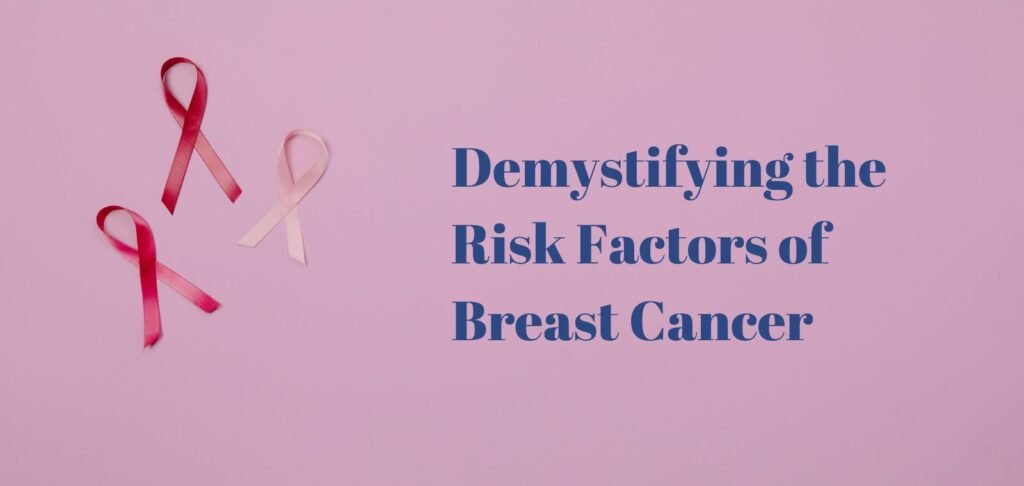
Hello, I’m Dr. Saadvik Raghuram Y, a practicing oncologist. Today, I want to talk about an important topic that affects millions of women worldwide – breast cancer. Understanding the Risk Factors of Breast Cancer can help in early detection and prevention. What is Breast Cancer? Breast cancer is a disease in which cells in the breast grow out of control. It can occur in both men and women, but it’s far more common in women. Risk Factors of Breast Cancer While the exact cause of breast cancer remains unclear, certain risk factors are linked to the disease: 1. Age: The risk of breast cancer increases with age. Most breast cancers are diagnosed after age 50. 2. Genetic Mutations: Women with certain genetic mutations, including changes to the BRCA1 and BRCA2 genes, have a higher risk of developing breast and ovarian cancer. 3. Reproductive History: Early menstruation (before age 12) or late menopause (after age 55) can increase your risk for breast cancer. 4. Dense Breast Tissue: Dense breast tissue can increase your risk for breast cancer and make lumps harder to detect. 5. Personal or Family History of Breast Cancer: If you’ve had breast cancer in one breast, you have an increased risk of developing cancer in the other breast. Your risk also increases if immediate family members have had breast cancer. 6. Certain Breast Changes: Some benign (or non-cancerous) breast conditions may increase your risk of getting breast cancer. 7. Radiation Exposure: Women who had radiation therapy to the chest or breasts (like for treatment of Hodgkin’s lymphoma) before age 30 have a higher risk of getting breast cancer later in life. 8. Hormone Treatments: Taking hormone replacement therapy (HRT) medications that include both progesterone and estrogen can increase the risk. 9. Alcohol Consumption: Studies have shown that a woman’s risk for breast cancer increases with the more alcohol she drinks. 10. Obesity: Being overweight or obese increases the risk of breast cancer. Conclusion: While these risk factors increase the likelihood of getting breast cancer, they don’t guarantee it will occur. Regular check-ups and mammograms are vital for early detection. If you have a high risk, talk to your doctor about what you can do to lower your risk. Remember, early detection saves lives.
Understanding Endometrial Cancer risk factors : Expert Insights from Dr Saadvik Raghuram – Best Oncologist in Hyderabad

Endometrial cancer, a type of cancer that begins in the lining of the uterus (endometrium), is a significant health concern. While the exact cause is not known, it is attributed to genetic mutation in endometrial cells. Understanding the Endometrial Cancer risk factors associated with this disease can help in early detection and prevention. Here are some of the key risk factors: Obesity Obesity is a strong risk factor for endometrial cancer. Fat tissue can change some other hormones (called androgens) into estrogens, especially after menopause. This can impact estrogen levels, increasing endometrial cancer risk. Endometrial cancer is twice as common in overweight women (BMI 25 to 29.9), and more than 3 times as common in obese women (BMI > 30). Hormone Factors Many of the risk factors for endometrial cancer affect estrogen levels. Factors that affect hormone levels include taking estrogen after menopause, birth control pills, or tamoxifen; the number of menstrual cycles (over a lifetime), pregnancy, certain ovarian tumors, and polycystic ovarian syndrome (PCOS). Early Menarche and Pregnancy(Endometrial Cancer risk factors) Early menarche, starting menstruation before the age of 11 years, and women who have never been pregnant are at a higher risk. Drug Tamoxifen Type 2 diabetes and a diet high in animal fats are also associated with an increased risk of endometrial cancer. Family History A family history of endometrial cancer or colon cancer (hereditary nonpolyposis colon cancer or Lynch syndrome) can increase the risk. Recommend: CAR T-Cell Therapy: Impact, Personalization, and Side Effects Explained by Dr Saadvik Raghuram – Best Oncologist in Hyderabad Prevention and Early Detection Prevention of endometrial cancer includes using oral contraceptives for at least one year, maintaining a healthy weight, and regular physical exercise. Diagnosis involves observation of the changes in the uterus through pelvic examination, hysteroscopy, ultrasound, and endometrial biopsy. In conclusion, understanding these risk factors can help in early detection and prevention of endometrial cancer. It’s important to remember that having one or more risk factors does not necessarily mean that a woman will develop endometrial cancer. Regular check-ups and discussions with healthcare providers can help manage these risks effectively. Citations:
Understanding Testicular Cancer: Diagnosis, Treatment, and Prognosis
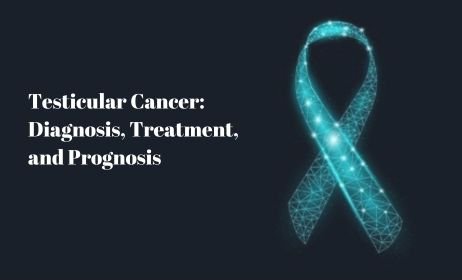
Testicular cancer is a condition that develops in the testicles, a male organ that produces sex hormones and sperm for reproduction. Although it is relatively rare, it’s important to understand the diagnosis, treatment, and prognosis of this disease. Diagnosis of Testicular Cancer The diagnosis of testicular cancer typically begins with a physical examination of the testes to check for the presence of lumps. If there is any suspicion, other tests are recommended. Physical Examination: A physical examination of the testes is done to check for the presence of lumps. The doctor will also examine your belly (abdomen), lymph nodes, and other parts of your body carefully to look for signs of cancer spread. Ultrasound: An ultrasound uses sound waves to produce images of the inside of your body. It can be used to see if a change is a certain benign condition (like a hydrocele or varicocele) or a solid tumor that could be a cancer. CT Scan: A CT scan is done to determine the extent of metastasis. CT scans take a series of X-ray pictures of your belly, chest, and pelvis. A health care provider checks the pictures for signs that cancer has spread. Tumor Marker Test: A blood test can detect proteins made by testicular cancer cells. This type of test is called a tumor marker test. Tumor markers for testicular cancer include beta-human chorionic gonadotropin, alpha-fetoprotein, and lactate dehydrogenase Treatment of Testicular Cancer Treatment options for testicular cancer include radiotherapy, chemotherapy, and surgery. Radiotherapy: Radiation therapy is a treatment method that uses X-rays and other high energy rays to kill abnormal cells Chemotherapy: Chemotherapy is a therapy where drugs are used to kill cells that are growing or multiplying too quickly. Medications for testicular cancer include Carboplatin, Cisplatin, Vinblastine, Paclitaxel, and Bleomycin. Surgery: Surgical procedures for testicular cancer include Inguinal orchiectomy, which involves the surgical removal of the testes, and Retroperitoneal lymph node dissection, which involves the surgical removal of lymph nodes situated at the back of the abdomen. Prognosis of Testicular Cancer The prognosis for testicular cancer is generally favorable. The 5-year survival rate is > 95% for patients with a seminoma or nonseminoma localized to the testis or with a nonseminoma and low-volume metastases in the retroperitoneum. The survival rate for testicular cancer depends on factors such as age, stage, and overall health. In conclusion, while testicular cancer is a serious condition, advancements in diagnostic techniques and treatment options have led to high survival rates. Regular self-examinations and prompt medical attention at the first sign of symptoms can lead to early detection and successful treatment. Citations: https://www.cancer.org/cancer/types/testicular-cancer/detection-diagnosis-staging/how-diagnosed.html/https://www.mayoclinic.org/diseases-conditions/testicular-cancer-care/diagnosis-treatment/drc-20352991https://www.msn.com/en-us/health/other/testicular-cancer/ar-BB1hubzShttps://www.healthgrades.com/right-care/cancer/testicular-cancer-survival-rates-and-prognosis
Understanding Testicular Cancer: Incidence, Epidemiology and testicular cancer symptoms
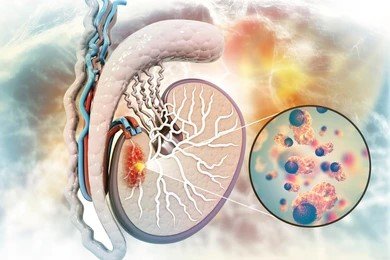
Testicular cancer, though not a common type of cancer, is a significant health concern that primarily affects young and middle-aged men. This blog post aims to shed light on the incidence, epidemiology, and symptoms of testicular cancer. Incidence Testicular cancer is relatively rare, accounting for about 1% of all male cancers. However, it is the most common cancer in young men aged 15-40 years. Globally, there are approximately 75,000 cases of testicular cancer and over 9,000 deaths per year. The incidence rate of testicular cancer has been increasing in the US and many other countries for several decades, mostly in seminomas. However, the rate of increase has slowed recently. It’s important to note that testicular cancer is highly treatable, and the cure rate is excellent. Epidemiology Testicular cancer can affect males of any age, but it is most frequently diagnosed in young men ages 15 to 30. It is far less common among males over age 50. The average age of males when first diagnosed with testicular cancer is about 33. The worldwide incidence of testicular cancer is lowest in Africa and Asia and highest in the Scandinavian countries, Germany, Switzerland, and New Zealand. The cause of the increasing global incidence of testicular cancer is unclear. Risk factors for testicular cancer include having an undescended testicle, a family history of testicular cancer, previous testicular cancer, and certain congenital abnormalities of the testes Symptoms The symptoms of testicular cancer can vary from man to man. The most common symptom is a small, hard lump in the testes that is often painless. Other symptoms may include: It’s crucial to seek medical attention if you notice any of these symptoms. Early detection and treatment significantly improve the prognosis for testicular cancer. In conclusion, while testicular cancer is not a common disease, it is essential to be aware of its incidence, risk factors, and symptoms. Regular self-examinations and prompt medical attention for any abnormalities can help ensure early detection and successful treatment. Remember, it’s always better to be safe than sorry. If you notice any changes or symptoms, don’t hesitate to consult with a healthcare professional. Your health is worth it! Citations: https://exonpublications.com/index.php/exon/article/view/epidemiology-of-testicular-cancer
Understanding Multiple Myeloma: Symptoms, Diagnosis, and Treatment options
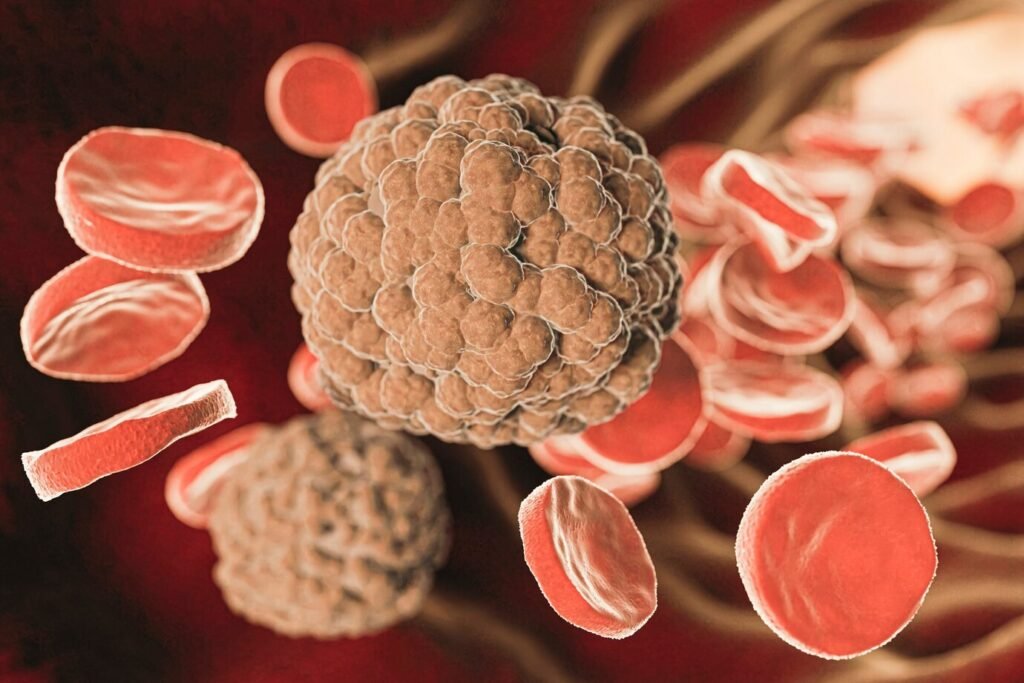
Multiple myeloma, a type of blood cancer, affects plasma cells in the bone marrow. These cells are crucial for our immune system and produce antibodies to fight infections. When they become cancerous, they multiply uncontrollably, leading to various symptoms and complications. Common Symptoms of Multiple Myeloma Diagnosis and Treatment Treatment Options: Conclusion Early detection is crucial for managing multiple myeloma. If you experience any of the symptoms mentioned above, consult a healthcare professional promptly. Remember, knowledge and awareness empower us to fight against this challenging disease. Stay informed, stay vigilant Recommend: Understanding Melanoma: Insights from an Oncologist
Multiple Myeloma: Unraveling the Complexities of a Stealthy Blood Cancer

Multiple myeloma, a lesser-known but formidable adversary, emerges from the depths of our bone marrow. It stealthily infiltrates the intricate web of plasma cells, disrupting the delicate balance within. In this comprehensive blog, we delve into the evolution, treatment, and ongoing quest to catch this elusive foe early. The Evolution of Multiple Myeloma Risk Factors and Demographics Treatment Advances and Prognosis The Quest for Early Detection Conclusion As we unravel the mysteries of multiple myeloma, we stand at the precipice of breakthroughs. Vigilance, research collaboration, and hope propel us forward. Let us continue our relentless pursuit to outwit this silent adversary and offer solace to those affected.

